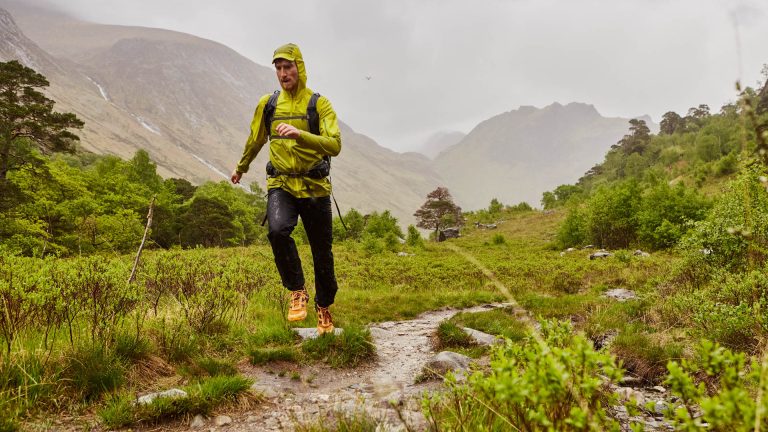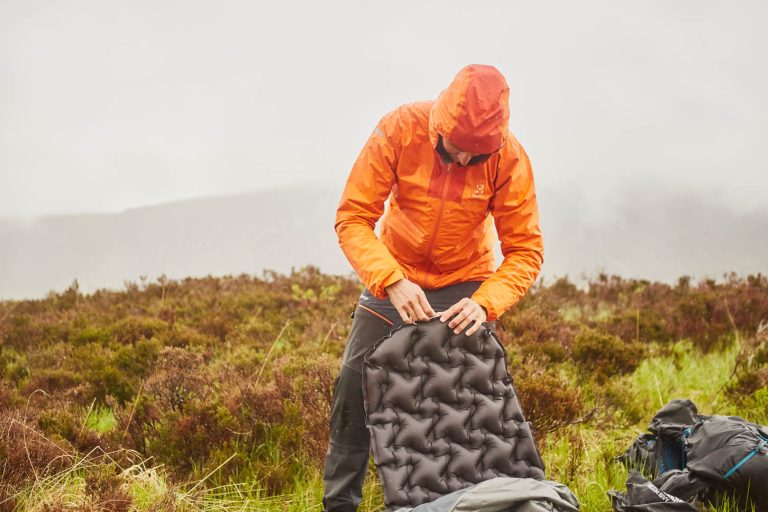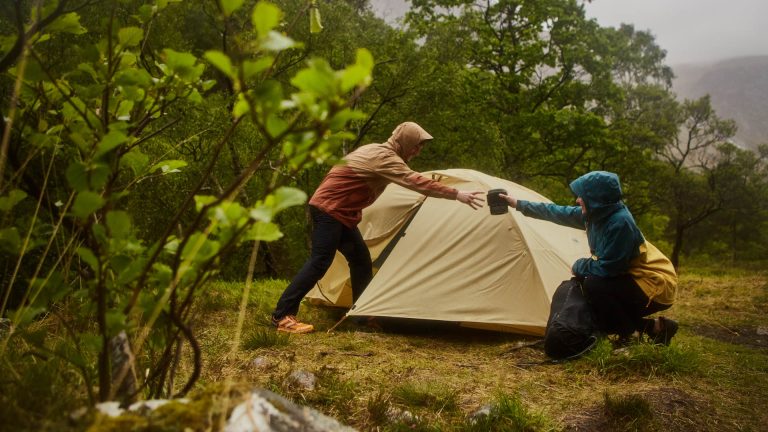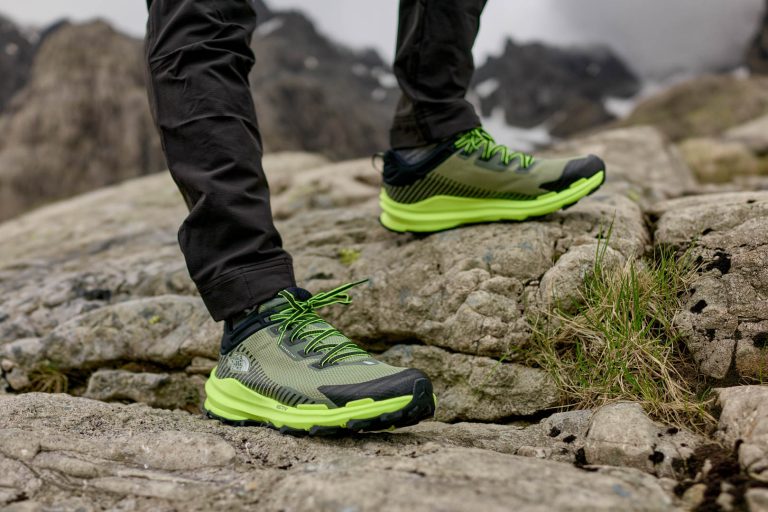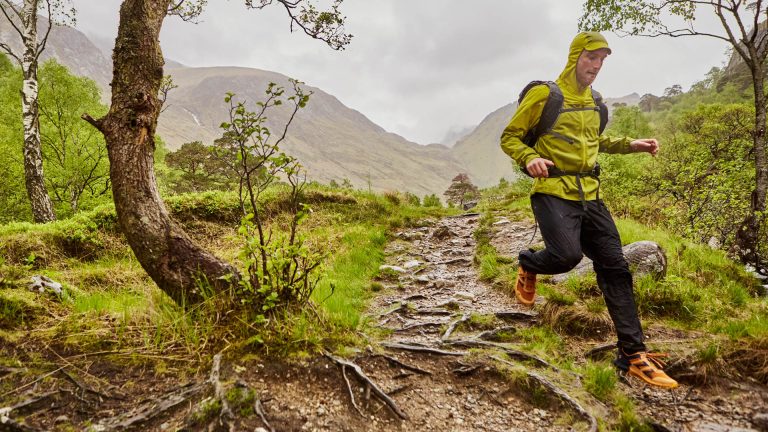On any extended wild camping trip, multi-day backpacking adventure, hut-to-hut trekking holiday or summer bikepacking trip, you’re going to spend a fair amount of time huddled in your sleeping bag. It’s a key part of your gear load-out, and on chilly nights, you’ll really appreciate its warmth and comfort, which can be the difference between a good night’s sleep and a miserable shiver-fest. The problem for many eco-conscious outdoor enthusiasts is that, until relatively recently, when it has come to deciding on a sleep system, performance and sustainability haven’t necessarily gone hand in hand.
That’s a shame, not just for outdoorsy types, but also for the planet. If you think about the sheer volume of materials involved in making a sleeping bag, especially compared to something like a rucksack or a waterproof jacket, it’s obvious that making this vital bit of kit more eco-friendly could have a huge environmental benefit. Thankfully, there have been a few notable efforts in this regard, spearheaded by brands such as Mountain Hardwear, Marmot, The North Face, Exped, Nordisk, Mountain Equipment – and now, Rab too.
Up to now, arguably the most eco-conscious bag on the market has been the Mountain Hardwear Lamina Eco AF. This technically advanced bag boasts fully recycled nylon fabric and trims (which includes the compression sack and mesh storage sack too). The high-performance Thermal.Q synthetic fill also contains 70% recycled polyester. The bag is also PFC-free, ensuring its water repellent finish contains no harmful chemicals. Most remarkably (and commendably), however, the Lamina Eco AF sleeping bag is undyed – hence its unusual white colour. Admittedly, it might not be the most practical choice for a bit of outdoor kit, but on the other hand, it saves thousands of gallons of wastewater in the production process, so who cares if it gets a little grubby? For all these reasons, it nabbed a well-deserved spot in our Green Gear Guide a couple of years back.
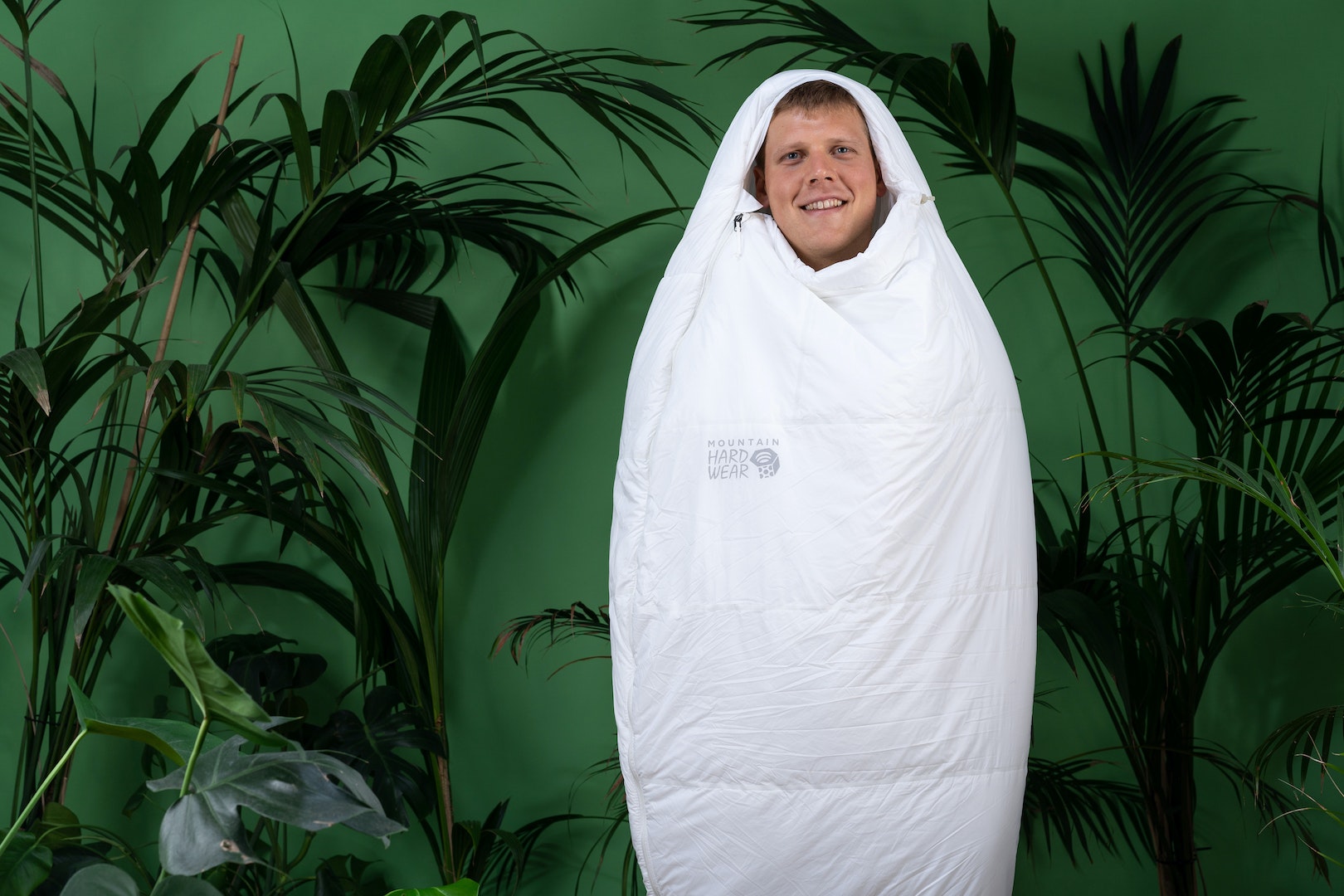
Mountain Equipment’s Earthrise bags run the Eco Lamina AF a close second though, and unusually, they are filled with natural down, not synthetic insulation. It’s not just any old down, of course – it’s 100% recycled down, obtained via the brand’s innovative Down Cycle project. Down and feather is removed from products destined for landfill and then washed, sterilised, and sorted. This is carried out at a facility in Hungary, which is powered by solar energy and uses extensive wastewater recycling to further minimise environmental impact. Down Cycle not only saves a valuable material from landfill, it also eliminates the farming impacts in obtaining virgin down, vastly reducing the carbon footprint of making down sleeping bags. The inner lining and outer shell of the bags are also made from 100% recycled fabrics.
We shouldn’t ignore a few other offerings from rival brands either, particularly those that come with a more affordable price tag. The North Face Eco Trail Synthetic 20 is a good example. It is not only filled with 100% recycled polyester insulation, it also has a recycled shell and lining. In fact, aside from the zipper teeth, this eco-friendly sleeping bag is made of 100% recycled materials. Another US brand, Marmot, offers their two-season Idlewild Sleeping Bag, again made from recycled polyester with a recycled synthetic fill. That one is also PFC-free.
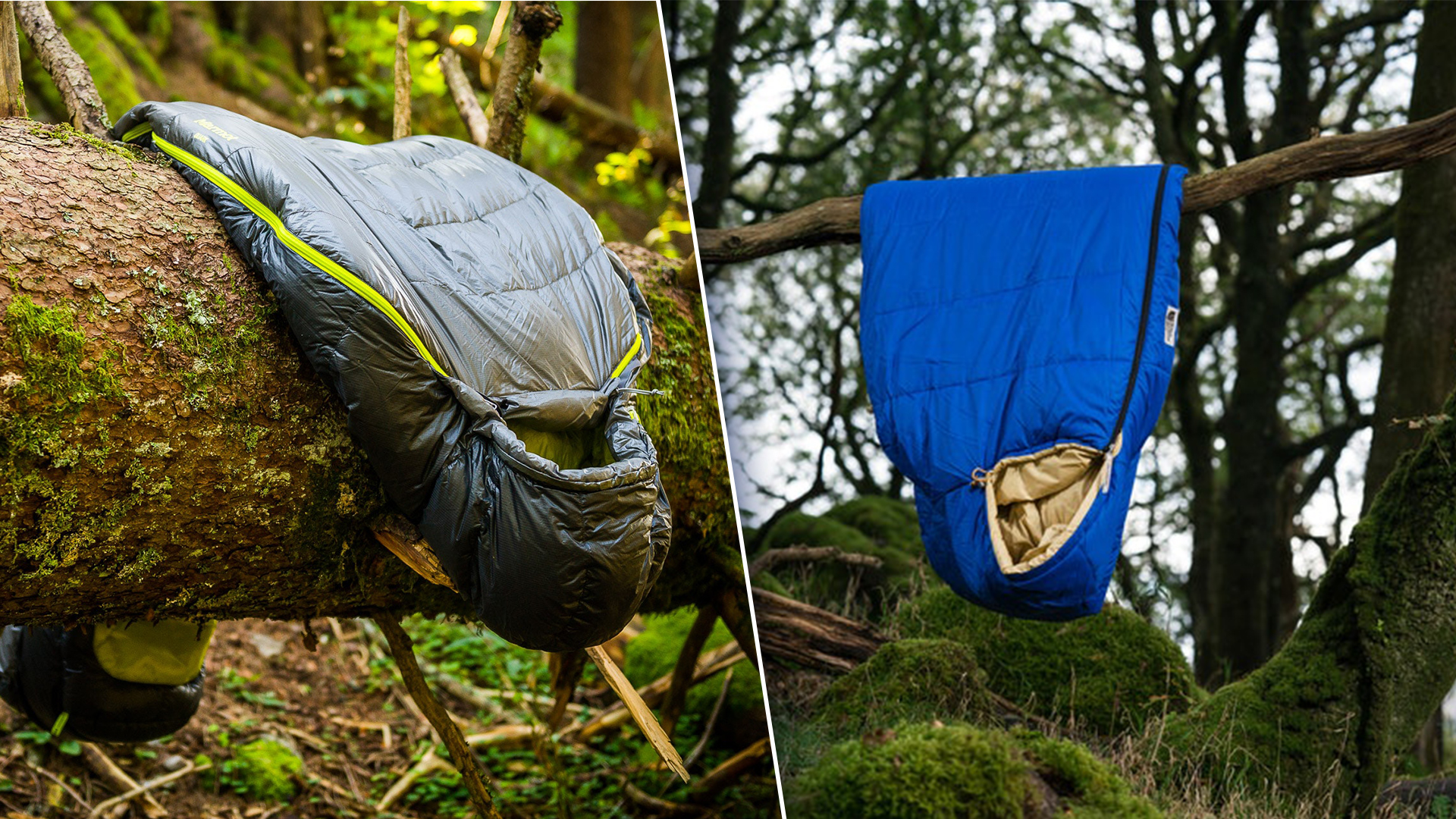
Similarly, there are good offerings from a number of European brands. Exped’s Litesyn Sleeping Bag is another synthetic option made from recycled polyester, with bluesign approved fabrics and a PFC-free finish. And the Nordisk Mummy Sleeping Bag is essentially the same, a three-season synthetic bag made from recycled polyester with a PFC-free finish.
In almost all cases though, these bags are individual product lines from a brand’s much larger sleeping bag range – most of which lack the same degree of eco-friendly credentials. Even the Earthrise range only consists of two men’s and two women’s bags, from Mountain Equipment’s total offering of over 50 down sleeping bags. This emphasises the fact that the problem tends to be exacerbated at the premium end of the market, when – rightly or wrongly – marginal but supposedly critical performance gains often seem to outweigh ethical and environmental considerations.
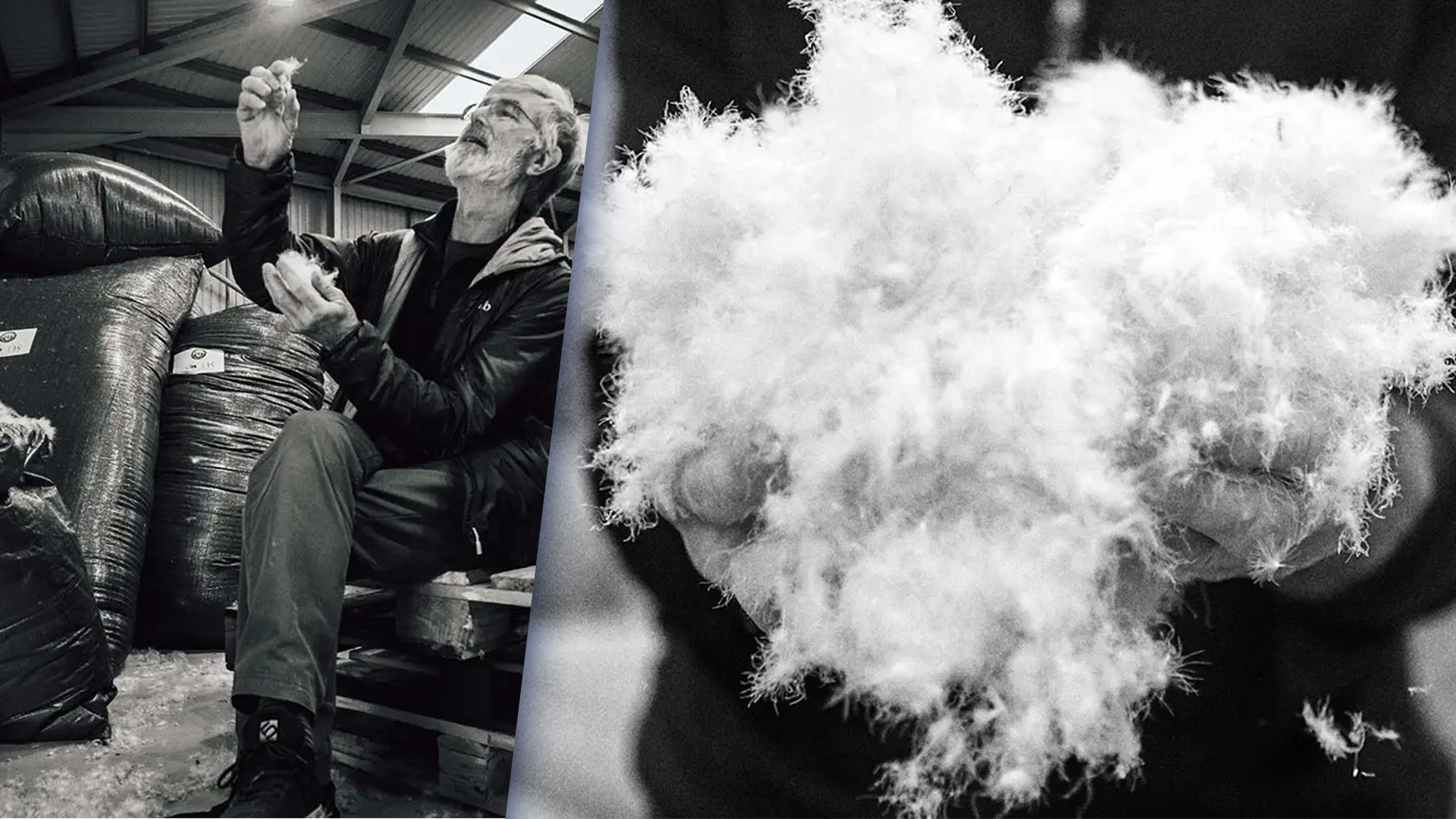
The first issue is the problem of fill. Although the best synthetic insulation is getting more and more thermally efficient all the time, in terms of warmth-for-weight, it still can’t compete with premium (700 fill power +) down. Of course, as a natural product, down has some upsides over synthetic alternatives (not being derived from petrochemicals, for one thing), but also some – ahem – downsides. Obviously, down sleeping bags are a non-starter for vegan outdoor consumers. And even if you are prepared to compromise on that, there are ethical considerations relating to the treatment of the birds used in the down trade. Although most down is a by-product of the meat industry, and birds are usually not live plucked, it’s important to look for responsibly sourced down (RDS) certifications or other reputable down tracing and welfare accreditation systems such as Mountain Equipment’s Down Codex or Patagonia’s Traceable Down Standard. As with the Earthrise bags, another option is to look for recycled down content, rather than virgin down fill.
This season, the situation does seem to be starting to change for the better. Rab, in particular, are making a concerted effort to update their entire sleeping bag collection to be more sustainable, rather than just focusing on a few isolated ‘green products’. This includes their down bags – though that doesn’t include the fill, since none yet use recycled or reclaimed down like Mountain Equipment’s Earthrise bags. Still, every bag in both the Rab Neutrino and Alpine down ranges is PFC-free, incorporating Pertex Quantum 100% recycled fabric. It’s also worth noting that Rab hand-fills all of their down sleeping bags at their factory in Derbyshire, UK, which presumably reduces the costs of transporting finished down bags to the UK market. Rab’s in-house service centre can also wash and repair your down sleeping bag, ensuring added sustainability through longevity. And lastly, Rab’s parent brand, Equip Outdoor Technologies UK Ltd, is also a certified Climate Neutral Company and a Fair Wear Member since 2020.
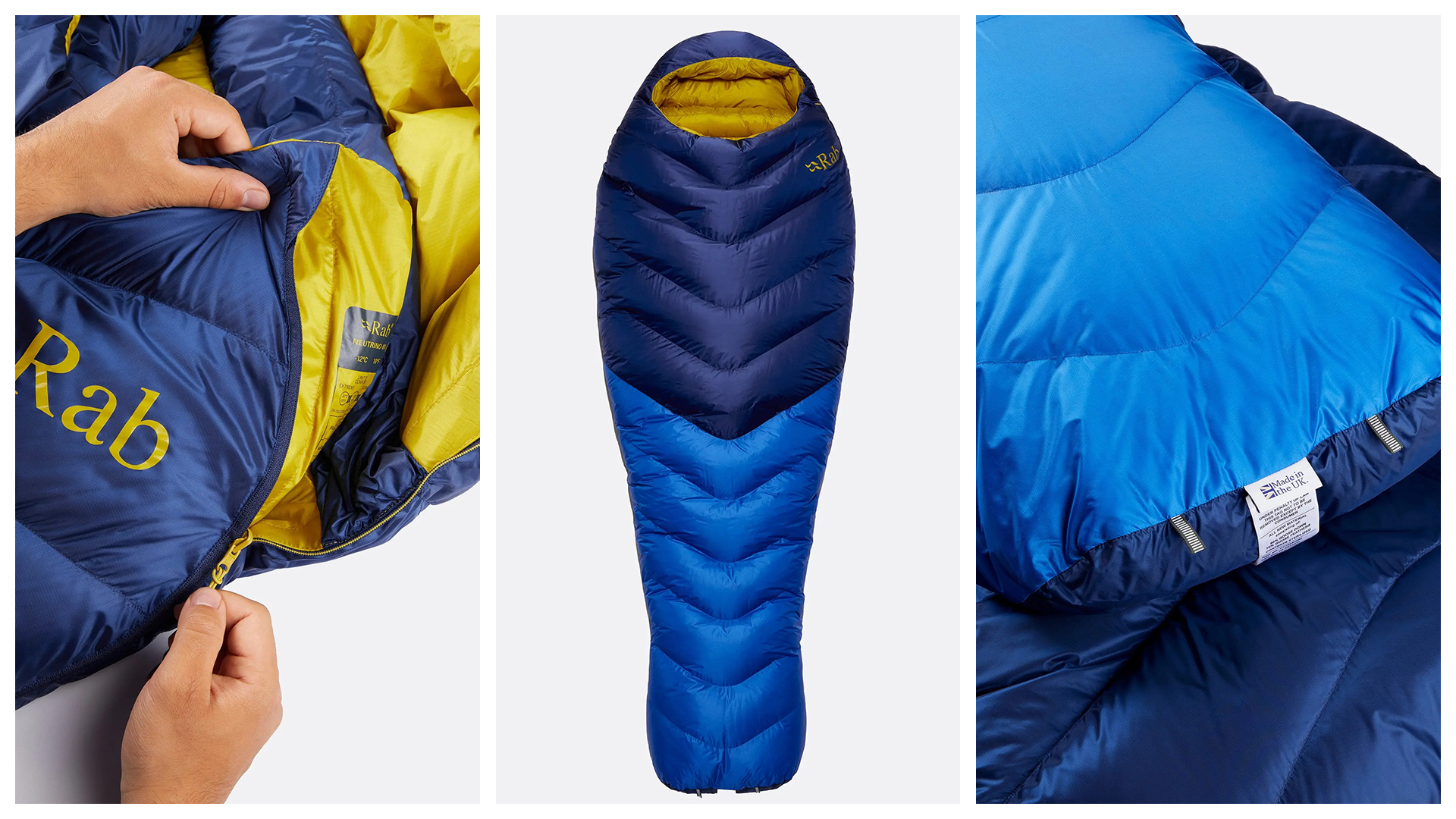
If you’re more attracted to the idea of picking up a synthetic sleeping bag, whether for practical or ethical reasons, Rab’s range is now indisputably among the most eco-conscious offerings on the market. The Solar Eco bags are perhaps the standout example, which are filled with 100% recycled Stratus synthetic insulation and made with 100% recycled outer fabrics, with a PFC-free DWR. The slightly more performance-orientated Solar Ultra series only lag a little way behind. They also feature 100% recycled Stratus synthetic sheet insulation, as well as recycled fabrics with PFC-free DWRs. It’s only the internal heat-reflecting TILT Scrim Technology that uses virgin polyester and an aluminium coating. Tim Fish, Product Director at Rab said: “This new sleeping bag range is Rab’s most advanced yet – combining over four decades of expertise with the latest technical and sustainable innovations. We have been working hard and done an extensive amount of research, resulting in the new range using more recycled materials than ever to support our mission to reach Net Zero emissions by 2030.”
It’s a laudable ambition, and one to which Rab seem to be showing demonstrable commitment. We hope they also pursue a closed-loop down recycling scheme like Mountain Equipment’s Down Cycle project, and perhaps look at reducing wastewater in the fabric dyeing process like Mountain Hardwear’s Eco Lamina bags. But equally, those brands could take a leaf out of Rab’s book by vastly expanding the sustainable options within their sleeping bag ranges, so that all their bags use recycled fabrics and fills.


